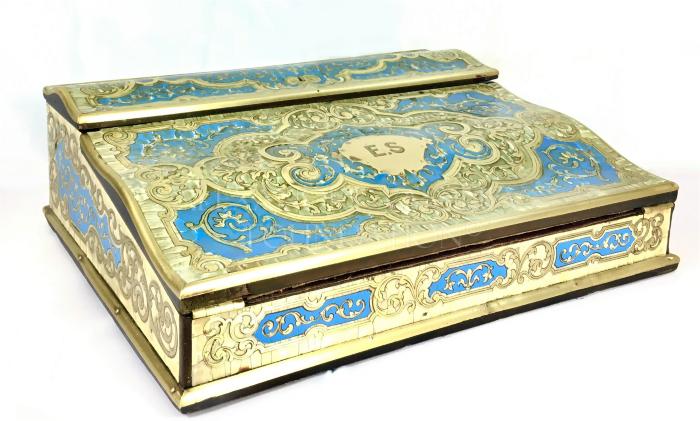House of Tahan (French, 1804 - 1882)
The origins of Maison Tahan go back to the beginning of the 19th century, in Belgium, when Pierre Lambert TAHAN (1780-1844) founded a workshop producing tableware made from wood from Spa, a small water town in the Ardennes. He left Spa for Paris in 1804, and set up his "boîtes et nécessaires" factory in the Temple district.
His son Jean Pierre Alexandre (1813-1892) was thus born in Paris, and in 1837 he helped him to take over the full management of the company in 1844, his father then ceasing all activity. Jean Pierre Alexandre will then use his ingenuity to begin his great pioneering work.
First, he separates the workshop on rue de Quincampoix from the store on rue Basse du rempart. He developed the production of boxes but also made larger pieces of furniture, daily pleasures, desks, work tables. In 1845, he also began to advertise in newspapers, a practice that was still little used.
"Supplier of the King and the Princes", in 1849 he won a silver medal at the Industrial Products Exhibition, and was then called "the prince of small cabinetmaking". In 1855, he bore the title of "Emperor's Supplier" at the Universal Exhibition where he exhibited an extraordinary carved aviary. The Court placed a large number of orders with him, including rosewood planters, coffee tables for the Tuileries Palace, and a mahogany and gilded bronze shelf for Napoleon III's desk. His store moved to 34 rue de la Paix (1849 -1866), then 11 Boulevard des Italiens (1866-1878).
TAHAN quickly collaborates with Julien-Nicolas RIVART to inlay his furniture with porcelain flowers, which will fall into his privileged vocabulary. It is then an unprecedented technique, which places it at the forefront of modernity. In 1861, Tahan was referred to as "one of those manufacturers who get ahead of fashion and set the tone instead of suffering".
House of Tahan declined after the fall of the Empire that had supported it so much. Thus, in 1882, the factory stopped producing and the store closed its doors.

Related Object: Writing case of Elsa SCHIAPARELLI